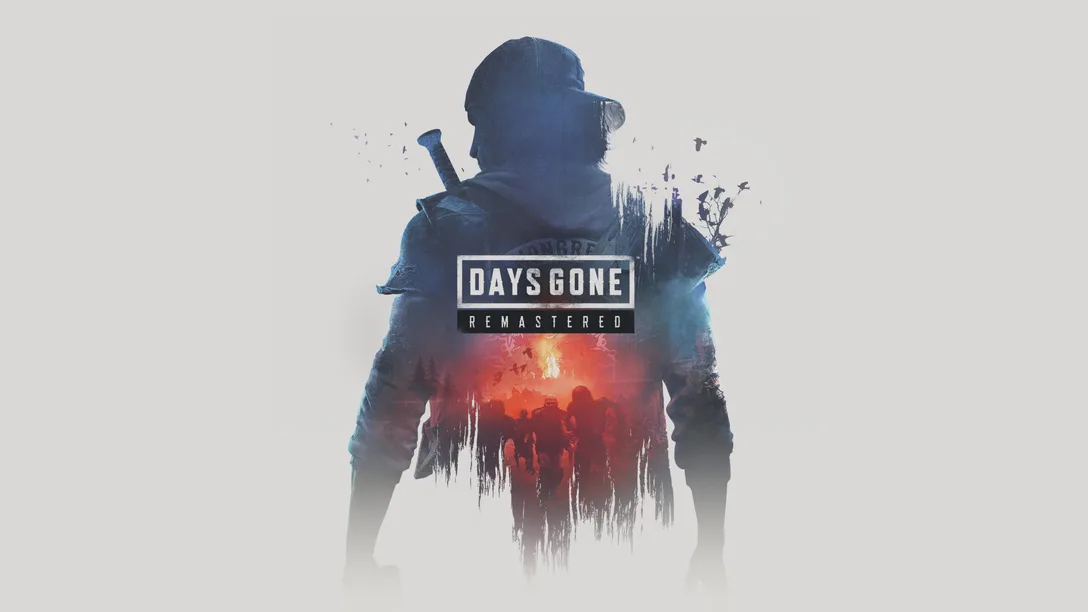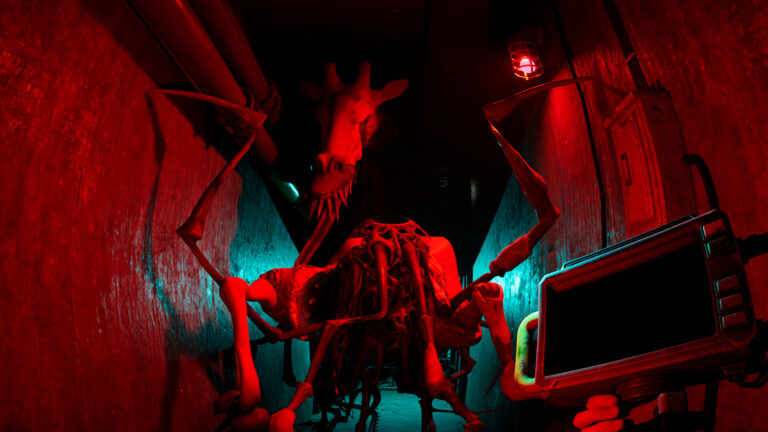
Having quite the strange development cycle, Grasshopper Manufacturer’s LET IT DIE made a quick release last Playstation Experience as a free-to-play console game (that isn’t a MOBA/MMO). Many would report on its combat similarities to franchises like the Souls series as well as roguelike gameplay elements, all while dressed up in Suda51’s trademark charm. And after 40 hours with the game, I think I can give you a good breakdown on what you’re getting for the low, low price of nothing.
In the post-apocalyptic future of 2026, a giant, ever-growing tower rose into the heavens know as the Tower of Barbs. A Finnish skateboarding, game playing grim reaper named Uncle Death brings your avatar into this structure, cheering you on as you attempt to ascend to the top. At least that’s the premise of the LET IT DIE arcade game you’re playing… that exists within the actual LET IT DIE game. This subversive premise introduced within the first 30 minutes of the game lets you know it’s a Grasshopper experience, and the humor doesn’t let up as you play this game (within a game).

Don’t let the pricetag fool you, though; LET IT DIE is full of mechanics that you would encounter in any full priced triple-A game. While the combat is not nearly as fluid as a Souls title and the camera/lock-on leaves much to be desired, your ability to time, block, dodge, and especially parry attacks is vital to surviving. While Souls prioritizes rolling/blocking attacks, and then attacking during those precious free moments, LET IT DIE employs a much more aggressive “whomever attacks first” approach almost more akin to a beat-em up game.
Each weapon has a unique moveset that gets more attack options and stat increases the more you use it. Items have extremely low durability that encourages you to constantly switch into new gear you scavenge. By finding rare blueprints, you can craft your own personal version of items that last far longer. There are a variety of themes to the objects of destruction and fashion choices you’ll tote, and all of them are quite eccentric.

The tower itself has 40 floors with a main boss every ten floors and several sub-bosses along the way. Each floor has one or more zones that generate somewhat random (but eventually very predictable) items and enemies to encounter. On specific and fixed floors, some elevators bring you back to a safe hub area for a monetary fee. This hub offers storage, buying/selling, crafting, and asynchronous online raiding, where you can steal other player’s resources and even characters when they’re not playing. This safe area is also the only place where you can exit the game without losing your character — a hindrance if you’re someone who has spotty internet or needs to take regular unexpected real-life breaks.
Like any roguelike, there are stratagems in place for any obstacle or item you may encounter. Some examples include killing certain animals for food before you collect them to will receive completely different stat effects, being aware of arena rooms that will lock you in until you kill everyone else, or using the ability to crouch to get a devastating sneak attack on unaware foes. There’s a lot of factors that compound on top of each other come into play every step of the way. Sometimes you’ll get killed by an unexpected trap, other times you’ll have a happy accident as enemies kill each other with friendly fire. To break up some inescapable monotony, a myriad of quests are offered along with campaign bonuses for logging in daily.

Another way LET IT DIE gets compared to roguish games is that zones on each floor change regularly. Depending on your luck, the layout can alter itself in such a fashion that you can skip past multiple floors if you happen to be playing on a good day. This layout can get convoluted, though, as to progress higher in the tower, you sometimes actually have to go DOWN escalators into previous floors.
The way Grasshopper Manufacture makes money with LET IT DIE is by selling two things: Death Metals and an Express Pass. The former can revive your character on death in “most” situations (akin to using quarters at the arcade), or can be exchanged for more storage slots/5000 gold. Express Passes remove the fee for using the elevator, gives 10 more inventory slots (which is a huge deal), premium items daily, and a slight increase in resources gained. At $15 for 30 days, this feature makes the game akin to a subscription-based online title. The game gives you a good deal of 24-Hour Express Passes for free at the start as an incentive.

As you progress through, equipment sets from earlier floors will give diminishing returns on damage and protection and pretty much render themselves useless, forcing you to repeatedly upgrade existing gear with very high material costs, or outright use newer gear. This is where LET IT DIE’s unfortunate grind comes in.
My initial praise of the game eventually turned into monotonous boredom as a result of this demanding upgrade system. It took me about 20 hours to progress through the first 20 floors of the game, but then another 20 to get just six floors higher after that. True to the title, the avatars you buy and control are very expendable, and at key points, you unlock to the ability to buy better versions with much higher level caps, meaning you’ll trash your older characters regularly despite the time and work you put into them. If a character dies and you choose not to revive them on the spot, it will either take a lot of money to revive them without losing everything they had on them or several hours of grinding a new character to about where you were before. This can get frustrating as you can die in one hit regularly from player-generated enemies (called Haters) that spawn once per floor. If kitted out correctly, not only can these enemies one-shot you, they can take most of your resources to defeat. Also akin to games like Spelunky, if you spend too long on a floor, near-invincible elite enemies (called Jackals) come in and can instantly kill your character without a chance for on-the-spot revival. The former of these two dangerous foes can also come in at high levels regardless of where you’re personally at, so imagine my frustration when I have to run into one at level 77 when I just started a new Level 1 character.

Bosses, unfortunately, get stale too. The sub-bosses in LET IT DIE start repeating very early on and unless you prepare in advance, most can nearly one-shot you/take several minutes to kill. After each sub-boss, you’ll usually find weapons/armor that scale to the point where said bosses become trivial in repeat fights. While that’s standard in a lot of RPG systems, it takes away any sense of skill that you would get in a Souls game with minimal stat growth. While low level runs are common in From Software’s titles because you’re still able to do significant damage to enemies and tank a hit, I’d dare argue its nigh impossible in LET IT DIE. The main four bosses are designed well with quirky backstories and introductions, such as Floor 20’s Jackson, who is a non-heteronormative living head who used to take selfies in front of explosions for the thrill of it. But upon reflection, all of them are actually reskins of existing subbosses, just with neat gimmicks before actually fighting them.

For the last moments I spent with the game, instead of exploring with the dread of death behind every corner, I followed guides online to grind floor 11 and 21 for several hours for upgrade materials and consumable items to use against bosses. A strategy a lot of people use is just to grind the first floor over and over since it generates about the same amount of cash as you would get later on in the game, but with far less risk. These lulls shouldn’t have to be part of a game’s experience, but you actually plan on beating LET IT DIE’s current peak, it’s required. The pacing of the game follows a Castlevania-like mentality where you get great story-bits at key points, but everything in between is repetitive filler, and that filler gets longer and longer the farther you dive in.
It’s a shame because there’s plenty of things to like about LET IT DIE. While the base raiding function gave me nightmares of Metal Gear Solid V’s similar mechanic, the resources you lose while your base is under attack in this game are minuscule, and there’s a flat bonus given to the attacker, so you’re getting much more out of raiding than you risk losing. There’s another gameplay mechanic called “Decals” that I won’t digress too much over, but it can function basically like an addictive gacha system that gives your character equippable and very useful buffs. There’s a lot of little details and endearing aspects in the overall presentation as well, such as one random taunt assigned to each character by pressing the shoulder buttons or hearing weird audio cues from the animals you’ll eat. You can watch multiple documentary-like videos on the game’s lore with an old tape player as well as read personalized tips and trivia from the cast through an in-menu Rolodex. Let it be known that LET IT DIE‘s worldbuilding is top tier.

While getting a 4K boost with PS4 Pro, the game isn’t exactly flexing its muscles on the base platform. However, the texture and surface art works wonders to integrate you into this nightmare maze. The griminess of each area comes off like a place you wouldn’t want to venture into without a facemask. Meanwhile, the sleekness of the subway system and premium elevators make come off as a high-class contrast. The soundtrack stars veteran Akira Yamaoka who gives the Tower of Barbs a very hostile atmosphere, but almost stealing the show is an in-game radio that sports over 100+ real indie bands in its lineup. And some of those tracks are darn good.
At zero dollars and zero cents, you’ll most likely be entertained, or at least charmed for several hours. Unfortunately, the upper echelons of LET IT DIE output less original content and actual fun moments than what appears at the start. With only your free time at risk, it’s worth giving this game a shot and at least getting through the first 10 or 20 floors. While I would’ve preferred a more balanced $60 title, the online elements at work and the promise of constantly updating content makes LET IT DIE tower above the rest of the game industry’s freemium offerings. It’s a shame that the DNA of F2P games that this GungHo published adventure shares with its mobile siblings is the surprise wall of stat-based difficulty that sneaks up on you when the initial start of the game is so damn strong and amazing.
 (7 / 10)
(7 / 10)
Good
 (7 / 10)
(7 / 10)



